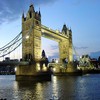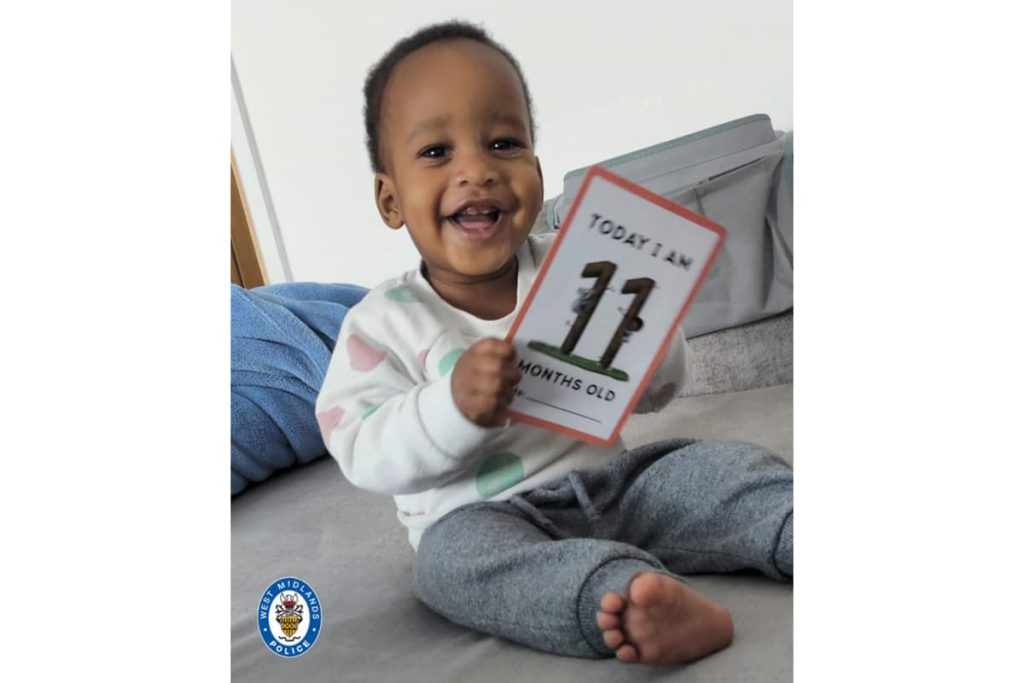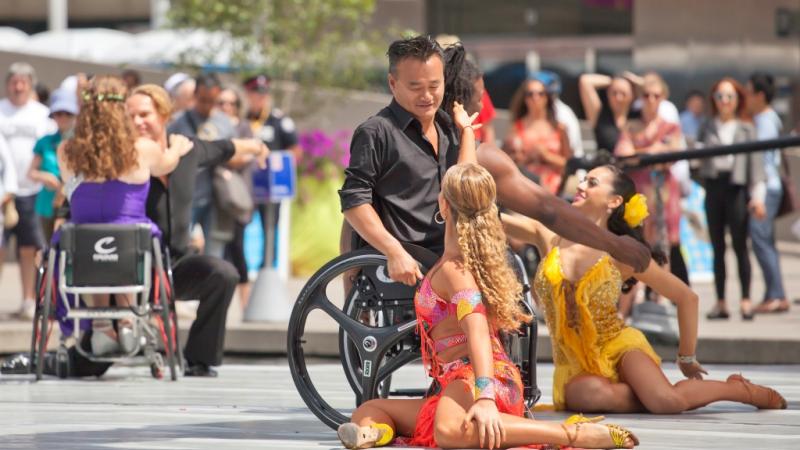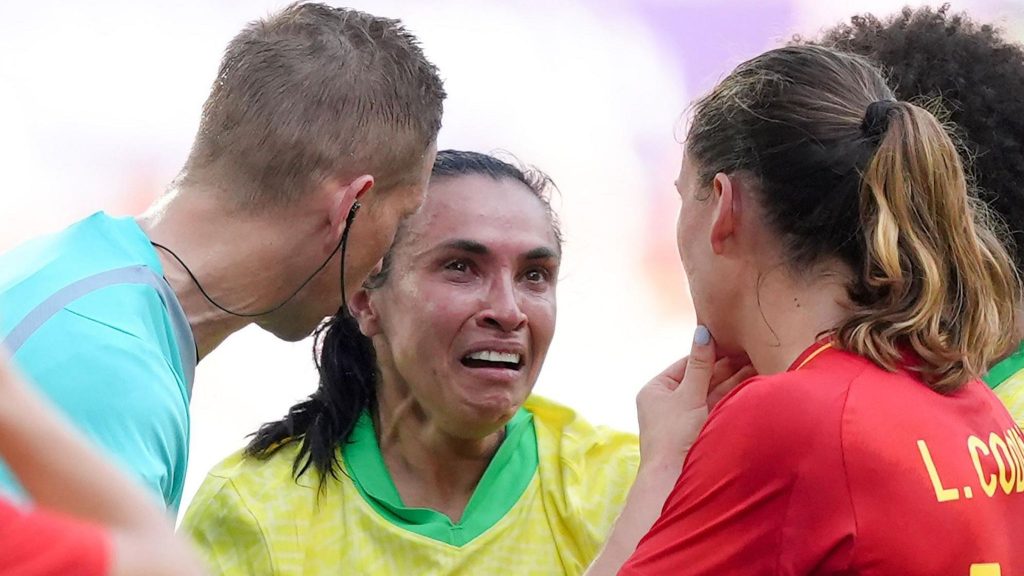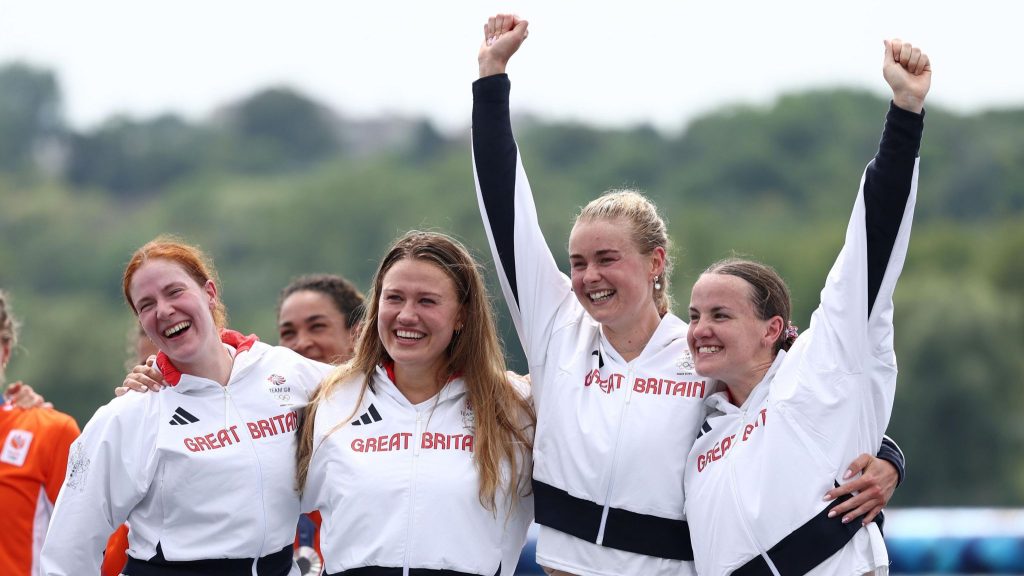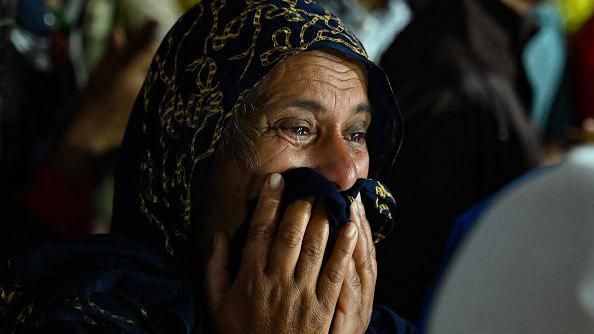Welcome to Access to London
Access to London is a nonprofitable website that wishes to create a comprehensive guide for London
Our aims and objectives are to offer a comprehensive guide for London. Have you ever wondered if a building, such as a restaurant or a cinema, is accessible? In that case, look no further since you have found the website you have always been looking for! So, select the category you’re most interested in and you will find local information about your venue and its accessibility.
Categories
New Locations
Latest News
Nursery worker charged over death of 14-month-old Noah Sibanda
A nursery worker has been charged with the manslaughter of a 14-month-old boy in the West Midlands.
Noah Sibanda died following an incident at the Fairytales Day Nursery in Bourne Street, Dudley, on 9 December 2022.
The Crown Prosecution Service (CPS) said it had charged Kimberley Cookson, 22, with gross negligence manslaughter after reviewing evidence supplied by West Midlands Police.
Fairytales Nursery Limited has been charged with one count of corporate manslaughter and a health and safety violation, the CPS added.
Deborah Latewood, 54, who owned the business, has been charged with one count of failing to comply with general duties under the Health and Safety at Work Act.
Malcolm McHaffie, head of the CPS’s special division, said: “Our thoughts remain with the family of Noah Sibanda at this time.
Noah Sibanda, described by his parents as “a beautiful, happy and easy-going little boy”, died after an incident at Fairytales Day Nursery in Bourne Street in Dudley on 9 December 2022.
After a review of the evidence by West Midlands police, the Crown Prosecution Service (CPS) said it had authorised criminal charges in relation to Sibanda’s death.
Kimberley Cookson, 22, who was a nursery practitioner, has been charged with one count of gross negligence manslaughter, the CPS said.
Deborah Latewood, 54, who was the director and business owner, has been charged with one count of failing to comply with general duties under the Health and Safety at Work Act.
Fairytales Nursery is no longer in business.
Different Para Athletics Generations Join Ottobock Get Together
USA’s U-17 world champion Ezra Frech and four-time Paralympic champion Brian Frasure are the guests on the second Ottobock Get Together on Wednesday (30 July) on World Para Athletics Facebook page.
The Ottobock Get Together is hosted by Germany’s eight-time Paralympic medallist Heinrich Popow, every month offering a different look at the lives and careers of the world’s best Para athletes.
This time, Frech and Frasure join Popow for a generational talk.
One of the most successful sprinters of his generation, Frasure had a dual career as a prosthetist – sometimes, running against athletes he helped developing the blades for.
He began working in the prosthetics industry following the accident who led to his leg being amputated in 1992. The USA athlete made his Paralympic Games debut at Sydney 2000 taking a silver medal in the men’s 100m T44.
Frasure competed in another two editions adding six medals to his collection – including three golds in the men’s 4x100m and 4x400m T42-46 relays at Athens 2004 and the men’s 4x100m T42-46 at Beijing 2008.
Fifteen-year old Frech was the youngest athlete in action at last year’s World Para Athletics Championships in Dubai and is one of the most promising names of his generation.
In 2019, he also took a gold medal in the men’s U-17 high jump T63 at the Notwill World Junior Championships and two silver medals at the Lima 2019 Parapan American Games (in the men’s high jump and long jump T63-64).
The first edition of the Ottobock Get Together took place in June with Germany’s Johannes Floors and Switzerland’s Sofia Gonzalez talking about the journey from learning how to use prosthetic legs to becoming an elite athlete.
“I was always the youngest participant in activities for leg amputees and, as a teenager, I didn’t like it, I didn’t have fun with it. Until 2016 when I discovered the running blades and got a completely new perspective,” Gonzalez recalled.
You can watch the first edition on the link below.
The Ottobock Get Together takes place at 8:00PM (CEST) on World Para Athletics Facebook.
American DanceWheels Foundation Closes Pan Am Games
“One of the most memorable moments for me about performing at Nathan Philips Square was the reaction from the children,”
American DanceWheels Foundation (ADF), a non-profit organisation that uses ballroom and Latin dance to overcome the social barriers between people with and without impairments, performed at the Toronto 2015 Pan American Games.
ADF’s formation team, comprised of standing dance champions partnered with professional dancers who use wheelchairs, was highlighted at Nathan Phillips Square in the heart of Toronto, Canada, and at the Rogers Centre for the internationally televised Pan Am Closing Ceremonies on 26 July.
“Our performance at the Closing Ceremonies marked the 25th anniversary of the Americans with Disabilities Act,” ADF dancer Ania Flatau said. “This opportunity was a chance to show what incredible things can be done when all communities unite.”
The opportunity to dance at the Pan American Games came about when ADF’s Artistic Director, Aubree Marchione, was hired as one of the choreographers. Arthur Murray Manhattan in New York City, USA and the YMCA in South Amboy, New Jersey, USA provided rehearsal space for the troupe a week prior to traveling to Toronto.
“Most of the dancers in my group did not know one another, but by the end of the performance, we felt like a family,” Marchione said. “What we experienced together was really wonderful, and I am lucky to have had such an enthusiastic team.”
On 20 July, ADF was welcomed by the US Consulate in Toronto during a reception at the renowned Cambria Gallery.
ADF first took the stage at Nathan Phillips Square and was named one of the top-three performances during PANAMANIA, the 35-day arts festival that accompanied Toronto 2015.
“One of the most memorable moments for me about performing at Nathan Philips Square was the reaction from the children,” ADF dancer Derrick Williamson said. “Children are often very curious about disability, but are prevented from asking questions. After our performances, several excited children came over to meet us. What was inspiring was that instead of learning to be scared of those with disabilities, they saw how we are similar and what we are capable of.”
During the Closing Ceremonies, the dancers performed a tantalising Tango alongside music artists Pitbull, Kanye West and Serena Ryder for an audience of more than 45,000 people.
Dr Yaser Jabbar: Child, 11, in wheelchair after surgery – as doctor accused of ‘inappropriate’ operations
The mother of a young girl treated by a surgeon accused of carrying out “inappropriate and unnecessary” operations has told Sky News her daughter had to use a wheelchair for nearly two years after surgery.
Great Ormond Street Hospital (GOSH) has launched an investigation into the cases of 721 children after an expert review found Dr Yaser Jabbar was alleged to have caused “serious harm” through “unacceptable” treatment, according to a lawyer acting for families of some of the young patients.
Now Claire Osborne, whose daughter Ella underwent corrective surgery on her leg by Dr Jabber in the summer of 2020, has called on a 2023 expert report by the Royal College of Surgeons (RCS) to be made public.
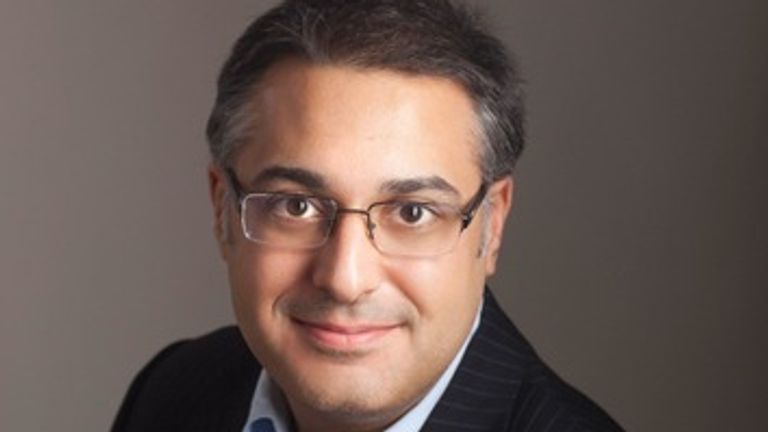
It comes as Dubai’s CMC Hospital – where Dr Jabbar has recently worked – confirmed it had suspended the surgeon.
Ella was 11 years old when she had the operation under Dr Jabbar after she developed a condition called genu valgum, in which the knees tilt inward while the ankles remain apart. She also has multiple complex needs.
She had already undergone the same corrective procedure with a different doctor, but her recovery after the second operation was more painful and took longer.
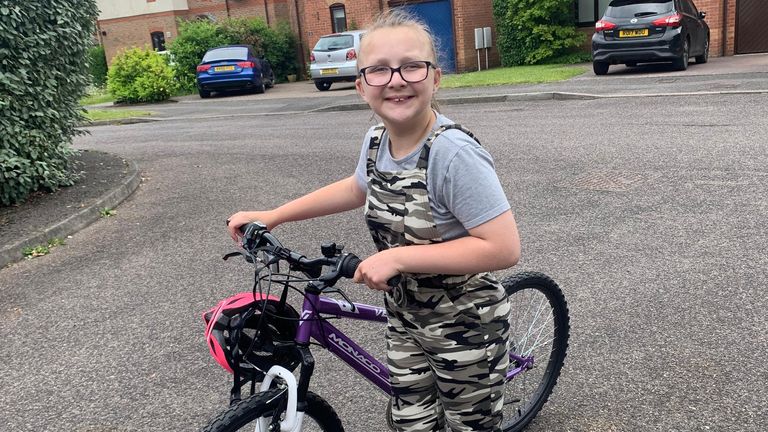
“She just kept saying to me all the time, ‘Mum, it hurts, it hurts’. And the way she was walking was so strange. It was like her knees were overlapping and they were clicking for every step she took,” Ms Osborne said.
More on Nhs
‘Reform or die’: Can technology save the NHS?
Naked politics as Starmer tries to calm NHS expectations
Ban on junk food ads before 9pm to come into force next year
Related Topics:
“At one point she would do 10 miles on the bike and it got to the point where she couldn’t even walk around a supermarket with me.”
Ella was also forced to rely on a wheelchair during this time, and Ms Osborne and her husband could also feel a screw from a plate inserted in Ella’s leg through her skin.
“Ella was just so miserable. She was in pain. You can feel it as a parent – you know how a child is normally and you know when there’s something wrong.”
Read more: Children left in pain by surgeon’s ‘inappropriate and unnecessary’ operations
Ms Osborne says she consistently raised concerns about her daughter’s recovery, with Dr Jabbar telling her in a follow-up appointment: “If I’m not worried, you shouldn’t be worried.”
After consulting a private surgeon, Ms Osborne asked for a second opinion, and soon after Ella had a third corrective surgery by another doctor at Great Ormond Street.
Ms Osborne said that the surgeon “called it a miraculous correction”.
“What she did, the angle at which she corrected Ella’s leg, was huge.”
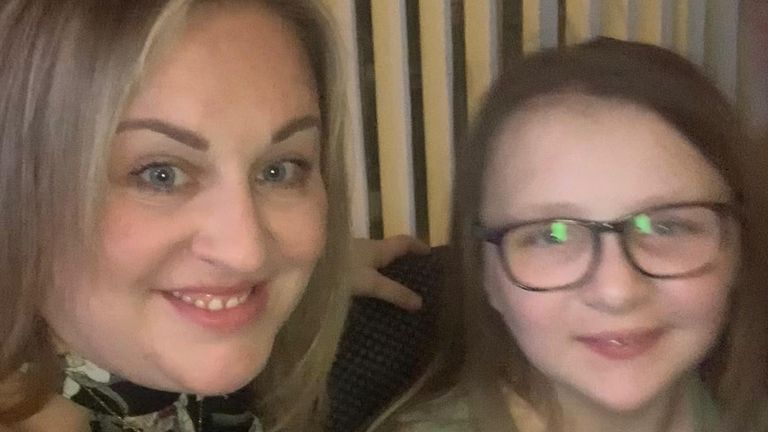
Now, Ms Osborne is calling for a 2023 Royal College of Surgeons review – conducted before the review in which Ella’s initial operation was one of 721 cases examined – to be made public.
“Without knowing facts, without knowing what, why, where, when you’re still kind of in limbo. Because this report’s out there. You know, it says things, but you don’t know what,” she said.
“It’s frustrating because obviously if the hospital had known that things were going on prior to Ella being treated, maybe Ella could have been saved.
“Without knowing what the hospital knew from the report, we’ll never know.”
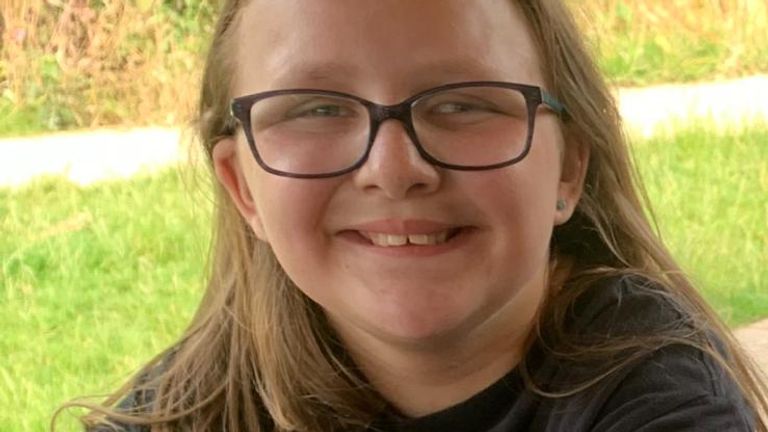
Of the 42 cases looked at as part of the GOSH probe so far, 22 children are believed to have come to harm as a result of operations Dr Jabbar carried out.
Ms Osborne has now set up a support group for other families who have been affected.
Amy Kirk, an associate at Fletchers Solicitors – a firm that is representing some of the families involved – said: “It’s really important the review is given to the families in full as they are already not feeling heard [and that] the report is released in a timely fashion and that a full investigation is done.
Be the first to get Breaking News
Install the Sky News app for free
GOSH issued a statement at the weekend apologising to the patients “who received poor care” and announcing its own investigation into the cases of 721 children treated by the accused surgeon at the hospital.
Caroline Murgatroyd, from Hudgell Solicitors, who is representing affected families, said the RCS review findings “paint a very worrying picture”.
She said: “They outline unacceptable assessments, examinations, clinical decision-making, and treatments of patients, poor communication with families with regards to seeking their consent for treatments and procedures, as well as failures to make it clear what kind of complications children could face after undergoing surgery.
“There are also references to children being subjected to surgeries which the RCS review panel could see no justification for, with children undergoing procedures which brought them no clear benefit.
“The findings so far have been shocking to read and have been very upsetting for our clients.”
She added: “Children have suffered leg length discrepancies following inappropriate and unnecessary surgeries which will require further and prolonged treatment, and nerve injuries causing ongoing pain.”
Keep up with all the latest news from the UK and around the world by following Sky News
A spokesperson for Great Ormond Street Hospital for Children said: “We know that the patients and families affected will be extremely distressed by the issues raised by the review we commissioned into our orthopedic service.
“This is not what they should expect from any service at our hospital. To all of them we wish to say we are deeply sorry.
“As we complete case reviews, the outcomes of these will be shared with the patient and their family, regardless of whether harm has been found or not.
“As we have said previously, we will share a summary of the report in our public board, but we will be sharing it first with our families.”
Dr Jabbar, who qualified from St George’s Hospital Medical School in London, was registered with a licence to practise until January of this year, according to the General Medical Council website.
GOSH said he had not worked there since 2022. The Sunday Times reported he only stepped down from his role last September after an 11-month sabbatical on full pay.
Two astronauts are stuck in space – how will they pass time (and survive) until 2025?
It sounds like the plot of a sci-fi film: two astronauts are stranded in space and won’t be coming back for another six months.
Sunita “Suni” Williams and Commander Barry “Butch” Wilmore arrived at the International Space Station (ISS) in June as the first crew to test Boeing’s new Starliner, which suffered helium leaks and thruster failures before it docked – raising questions over how safe it is for the return flight.
Boeing has insisted the astronauts are not stuck and said “there’s no increased risk” in bringing them back in the Starliner, but NASA has opted to bring them back on a SpaceX flight in February 2025 instead.
They should have only been in space for eight days, but they’ve now been there for nearly three months.
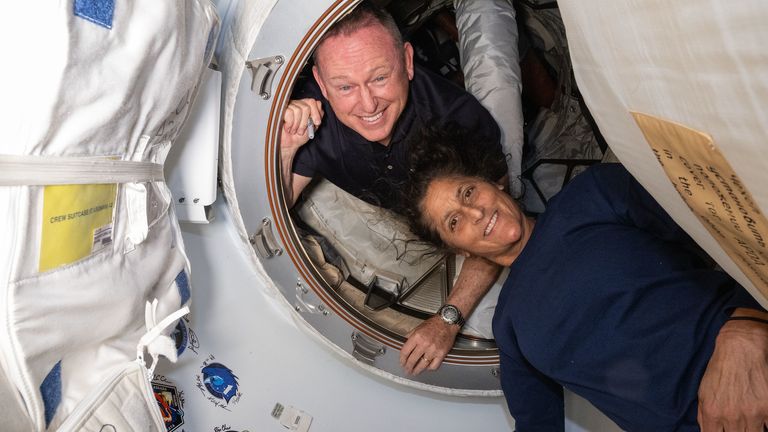
But do they have enough supplies for another six months, how are they coping mentally and what is day-to-day life like at the ISS?
Size and facilities
The ISS is 356ft (109m) end-to-end, one yard shy of the full length of an American football field including the end zones.
The living and work space, NASA says, is larger than a six-bedroom house, and has six sleeping quarters, two bathrooms, a gym, and a 360-degree view bay window.
As you’ll see later, it’s not quite as luxurious as it sounds.
Ms Williams and Mr Wilmore aren’t alone; they’re sharing the facilities with seven other astronauts from other missions; four of them fellow Americans and three of them Russians.
Is there enough food, water and oxygen?
Yes, there are reserve supplies up there to keep astronauts going for plenty of time.
The space station has its own oxygen-generating systems, and about 50% of oxygen exhaled from carbon dioxide is recovered.
As for water, the station has a urine-into-drinking-water recycling system, and a part of that system also captures moisture released into the cabin air from the crew’s breath and sweat.
Food supplies are a bit fancier. Meals are created at NASA’s Space Food Systems Laboratory in Houston, where chefs focus on making food appetising as well as nutritious.
Much of it is dehydrated, meaning it has to be filled up with water before being consumed, while some is ready-made and just needs to be heated.
There’s meat (barbecued beef brisket is one example of a meal on offer), eggs, vegetables, bread, savoury snacks and sweet treats in the station’s kitchen.
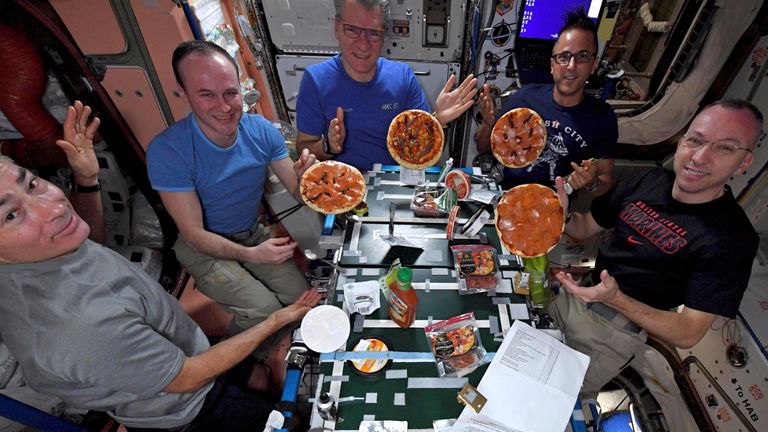
Crew members are also allowed to request some of their own personal favourites from off the shelves.
In a video on NASA’s YouTube channel, Ms Williams revealed her favourite commodity was Nutter Butter spread – and showed off a jar her family had sent up for her.
When were supplies last sent?
The spacecraft regularly receives more supplies from Earth, with the last one arriving on 6 August.
Launched on a rocket from Kazakhstan on 30 May, the supplies included about three tonnes of food, fuel and other supplies for Ms Williams, Mr Wilmore and the seven other crew members on board.
The crew can essentially place their orders for what they want to come on these crafts by speaking to Mission Control ahead of launches.
That was good news for Mr Wilmore and Ms Williams, who were forced to ditch their personal suitcases before taking off in June to make room for extra equipment, meaning they’ve had to wear spare clothes that were already at the ISS upon arrival.
Their own clothes finally arrived with the 6 August supplies, and more supplies are set to be sent up in a few months.
Once supply ships are emptied at the ISS, the crew fill them with their rubbish before sending them back to Earth.
How do you use a toilet without gravity?
There are some things space-based movies just don’t cover – but Ms Williams got into the grittier details of space life on NASA’s YouTube channel.
In the video filmed in 2012, Ms Williams showed off the toilet, which somewhat resembles one you might see on an aeroplane.
Read more:
Army barracks to house deep space radar to help protect the UK
How blasting ‘glitter’ into Mars’ atmosphere could make it more habitable
The difference is there are two separate tubes to go in – one for urine and one for poo. The urine one, which is coloured yellow, is attached to the wall and almost looks like a vacuum cleaner – and fittingly it has a suction function to prevent gravity from causing a mess.
The tube for poo looks like more of a typical toilet, with a seat too – though you have to hold on to a handle on the wall next to it to avoid floating away as you go.
On the bright side, there’s about half-a-dozen types of toilet paper stuffed into bags on the toilet walls, including wet wipes and disinfectant wipes in case “things don’t go correctly,” as Ms Williams puts it.
Astronauts are also each given toiletry kits that come with things like a toothbrush and toothpaste (which you have to either swallow or spit into a tissue) and a hairbrush – which Ms Williams says is pointless in space because gravity constantly keeps your hair upright.
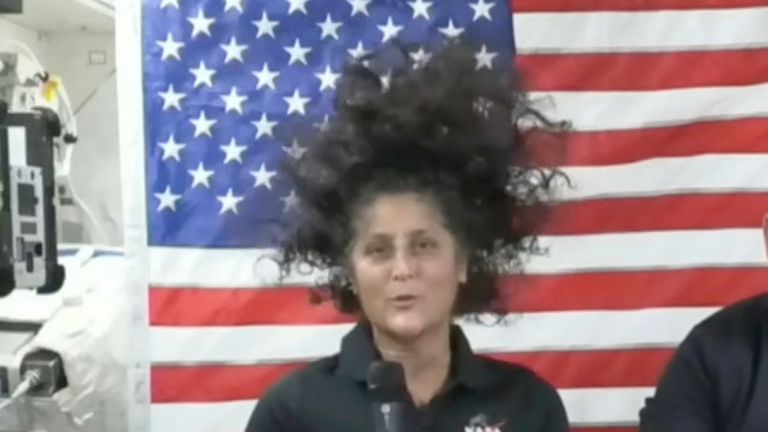
What about sleeping arrangements?
Remarkably you can sleep on the floor, on the wall or on the ceiling.
That’s because without gravity, the crew never feel like they are lying down. It makes no difference whether they are on the floor, standing up or upside down – it all feels the same.
So the ISS has sleeping stations about the size of phone booths that the crew get into, which consist of a sleeping bag and a pillow on the floor, wall and ceiling.
Leisure time
When they aren’t running space experiments, the crew can enjoy their view of Earth from the station’s observatory deck, or head to the Advanced Resistive Exercise Device (ARED) in the Tranquillity node – a fancy term for gym equipment.
The ARED offers traditional upper and lower-body exercises, such as squats, dead lift, heel raises, bicep curls and bench press by using vacuum cylinders to replicate weights in gyms.
The crew is encouraged to use it throughout their space stays, as muscle and bone loss is common on long missions.
How are the pair feeling?
They are both retired navy captains and longtime NASA astronauts who already have long space station missions behind them.
Mr Wilmore, 61, and Ms Williams, 58, said going into this test flight that they expected to learn a lot about Starliner and how it operates.
At their only news conference from space in July, they assured reporters they were keeping busy, helping with repairs and research, and expressed confidence in all the Starliner testing going on behind the scenes.
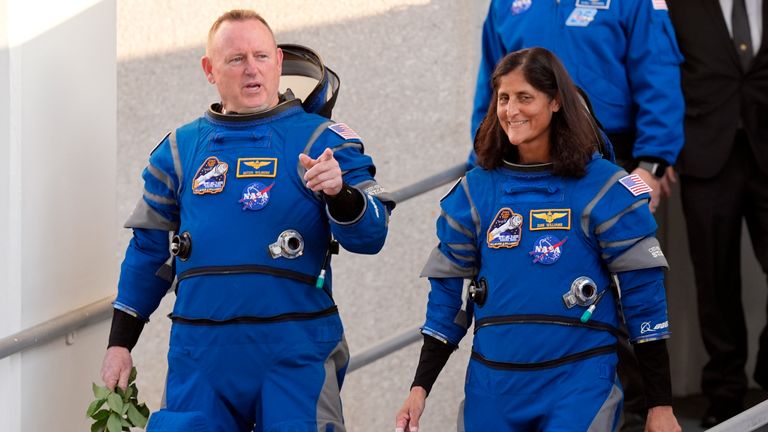

“I have a real good feeling in my heart that the spacecraft will bring us home, no problem,” Ms Williams told reporters.
“That mantra you’ve heard, ‘Failure is not an option,’ that’s why we are staying here now,” Mr Wilmore said.
“We trust that the tests that we’re doing are the ones we need to do to get the right answers, to give us the data that we need to come back.”
Mr Wilmore’s wife Deanna told AP in early August that he is “content” at the space station, “neither worrying nor fretting”.
She said Mr Widmore, who is a longtime elder at a church in Texas, has faith God is in control, and that this gives his family “great peace”.
In its latest update, NASA said Ms Williams and Mr Wilmore both supported the plan to come back in a SpaceX craft “fully”.
What’s happening now?
Starliner will now return to Earth unmanned, while the two astronauts are set to return in February on a
SpaceX Crew Dragon spacecraft which is due to launch next month as part of a routine astronaut rotation mission.
In a recent press conference, NASA administrator Bill Nelson said returning on the Starliner craft would be too dangerous.
“Spaceflight is risky,” he said. “Even at its safest, and even at its most routine. A test flight by nature is neither safe nor routine.”
Associate administrator Jim Free then added: “The uncertainty in our [technological] margins is what drove our decision.”
Many of Starliner’s thrusters in the propulsion system overheated when fired and leaks of helium, used to pressurise the thrusters, appear to be connected to how frequently they are used, NASA’s commercial crew manager Steve Stich previously explained.

Speaking at the most recent press conference, Mr Stitch explained: “The bottom line relative to bringing Starliner back is there was just too much uncertainty in the prediction of the thrusters.
“If we had a model – if we had a way to accurately predict what the thrusters would do for the undock and all the way through the deorbit burn and through the separation sequence, I think we would have taken a different course of action.
“But when we looked at the data and looked at the potential for thruster failures with a crew on board, and then getting into this very tight sequence of finishing the deorbit burn, which puts the vehicle on an entry, and then immediately manoeuvring from that into a step sequence to separate the service module and crew module, it was just too much risk for the crew.”
Be the first to get Breaking News
Install the Sky News app for free
Will this be the longest anyone has spent in space?
No – Russian Valeri Polyakov set that record in the mid-1990s, spending 437 days off Earth.
And last year NASA astronaut Frank Rubio came back from a 371-day trip alongside Russian astronauts Sergey Prokopyev and Dmitri Petelin, breaking the record for the longest amount of time spent in space by an American.
That trip, much like this one, was prolonged by technical difficulties, and was only meant to take six months.
Brazil great Marta goes off in tears after red card
Brazil were level when Marta was sent off just before half-time, with Spain scoring in the 68th minute and then the 17th minute of second-half injury time – an extension prompted by multiple injury delays.
Defeat means her side can only progress to the Paris 2024 quarter-finals as one of the best third-placed sides and must wait for the rest of the day’s games to finish before their fate is known.
Marta, 38, won Olympic silver at Athens 2004 and Beijing 2008, losing to the United States on both occasions.
She is the all-time leading scorer in World Cups, men’s or women’s, with 17 goals in 23 appearances across six tournaments.
Scott wins dramatic Olympic quad sculls gold with Team GB
It looked like the Dutch had taken victory with 250 metres remaining but Scott, along with team-mates Lauren Henry, Lola Anderson and Georgie Brayshaw, snatched victory in a dramatic photo finish.
The crew was in disbelief as they realised what they had achieved, with Coleraine rower Scott wiping tears away from her eyes after adding Olympic gold to her world title.
Scott joins swimmers Daniel Wiffen and Jack McMillan as gold medallists from Northern Ireland in Paris after their success in the pool on Tuesday.
Then, in a dramatic conclusion, a well-timed kick from GB in the final 100 metres pushed them past the Dutch on the line.
“We knew we had it, the confidence,” added Scott.
“We’ve done so many hard miles in training. For anyone out there, just go for it because if you think you can you might just one day and that’s the really cool thing about the Olympics.”
Scores missing as India landslides kill 166
The death toll from the massive landslides that have hit the southern Indian state of Kerala has now crossed 166, with officials saying more than 192 people are still missing.
Rescue workers say they are searching under collapsed roofs and debris of destroyed houses for possible survivors.
Thick torrents of mud and water swept through the region early Tuesday morning, flattening homes and uprooting trees.
Heavy rains continue in the area, hampering rescue operations.
The landslides are the worst disaster to hit the state since 2018, when floods killed more than 400 people.
The disaster took place in Wayanad district’s Mundakkai and Chooralmala areas, which are surrounded by tea and cardamom estates.
Rescue operations, that had halted late Tuesday night, resumed on Wednesday morning.
More than 3,000 people have been rescued and moved to 45 relief camps so far. Among those still missing are plantation workers and migrant labourers who lived here.
The rescue operations are being carried out by the army, navy and air force along with the National Disaster Response Force (NDRF) and teams of police and fire department.
But the efforts are being complicated by heavy rains and the rugged terrain, which has made it hard to reach the victims.The landslides have also destroyed key bridges connecting remote areas.
In Chooralmala, the army said it had used ropes to rappel across the river, which is in spate, to reach stranded people.
Kerala’s Chief Minister Pinarayi Vijayan said that sleeping villagers were caught off-guard, resulting in a high number of casualties.
On Wednesday, several opposition MPs raised the issue in parliament and demanded that the landslides be declared a national disaster.
Rahul Gandhi, leader of India’s opposition in the parliament and a former MP from Wayanad district, said his plans to visit the disaster-hit region had been cancelled after authorities warned him that “incessant rains and adverse weather conditions” would make it difficult for him to travel.







